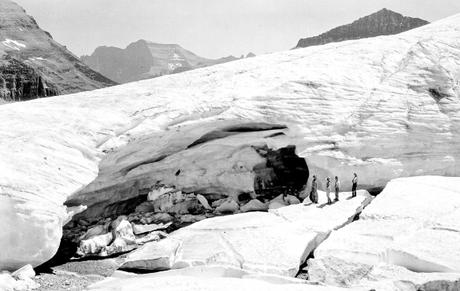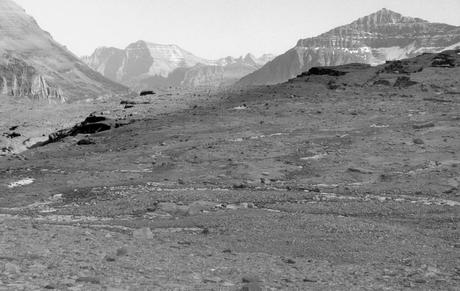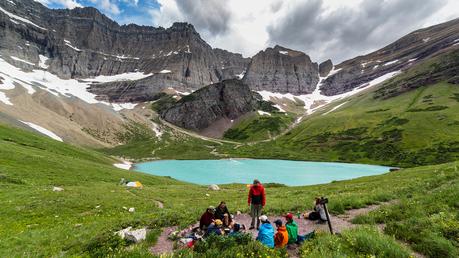GR: Scientists have used repeated photographs to study glaciers for more than a century (Rogers et al. 1984). Arthur Johnson published the earliest photographic study of glacier change in Glacier National Park in 1980 (U. S. Geological Survey Professional Paper 1180, 29 pp.). By 1980, the glaciers had already begun melting and shrinking. The photos in this article show that all the glaciers in Glacier National Park will soon be gone. As pointed out elsewhere, mountain glaciers store winter precipitation and release it during summer months. With more precipitation falling in winter as rain instead of snow, less water is stored in glacial ice, and this leads to shortages during summer.
“As the National Park Service turns 100, we’re looking at how climate change affects our shared heritage and what the agency is doing about it. This is our fourth story in a series.
“National Parks have grown up with photography. So it’s only fitting that in the last days of ice in Montana’s Glacier National Park, Lisa McKeon is using a camera to show how quickly climate change has killed off the park’s namesakes.
“After all, it’s one thing to note that of the park’s 150 glaciers that existed in the late 1800s, only 25 of them remain today. But it’s another to see what that cold, hard fact looks like on the landscape.
“For nearly 20 years, McKeon, a U.S. Geological Survey biologist, has prowled dusty archives to find old photos showing the splendor of the park’s glaciers in decades past. Those images have taken her to bushwhacking through the forest and to the highest reaches of the park so she can recreate those images.
“Put the old and the new images side-by-side and it’s impossible to ignore the visual evidence of how rapidly climate change has eaten away at the ice.
“These photos really resonate with people,” McKeon said. “When we first started taking them years ago, people kept asking for more. That first summer was spent filling media requests.”


Boulder Glacier with visitors in 1932 and bare land in 1988. The ice has shrunk so much that it’s no longer considered an active glacier. Credit: George Grant/Glacier National Park (top). Jerry De Santo/University of Montana image 642.001 (bottom).
“Soon there will be no glaciers left for McKeon to photograph. Scientists project that Glacier’s ice could disappear completely in just 15 years.
“This, more than anything, is the most visceral impact of climate change across the National Park Service — or the world for that matter. Rising seas, changing weather patterns and disappearing species will become more pressing as the planet continues to warm. But for these glaciers, this is the end of the road and it couldn’t be more obvious to the human eye or camera lens.
“Soon all that will be left are images like the ones McKeon is capturing now, which will endure as a searing testament to the changes humans have wrought to one of the most beautiful places on earth.

Park visitors eating dinner at Cracker Lake, a glacial-fed lake in Glacier National Park’s backcountry. Credit: Jacob Frank/National Park Service
“People have been coming to this rugged corner of northwest Montana and documenting their visits from behind the lens for more than a century. The photographic technology has changed from glass plate negatives to film to digital, but the urge to capture and share this spectacular landscape hasn’t.
“You can talk all you want about how beautiful this place is, but show someone a picture and then it’s crystal clear how amazing it is,” Jacob Frank, a ranger at Glacier and the park’s semi-official photographer, said.
“Glacier National Park is an area of pristine wilderness, 1 million acres of breath-taking beauty that’s at the center of the Crown of the Continent Ecosystem that spans 10 million acres on either side of the U.S.-Canada border. The park is flush with grizzly bears, mountain goats, wildflower meadows, and rushing rivers. But its namesake glaciers have always been the centerpiece of one of the National Parks Service’s best known parks.” –Brian Kahn (Continue: National Parks | Climate Central Special Report.)

